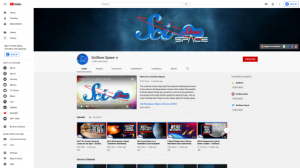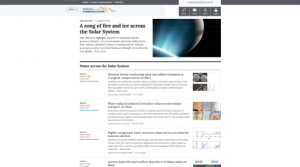General Interest
Back to Top
|
 |
|
Prince Albert: His Life and Legacy
|
Social studies |
|
Those with an interest in Victorian history and culture should check out Prince Albert: His Life and Legacy, a new website from the Royal Collection Trust that launched in August 2019 in honor of Albert's 200th birthday. This resource features over 17,500 digitized documents and photographs, most of which have never been published before. Albert is best known as Queen Victoria's beloved Prince Consort who died prematurely in 1861. This project highlights Albert's lasting influence on British culture and society. For example, the Collections section offers ample evidence of Albert's patronage of the arts. This included photography, which was then more commonly thought of as a scientific tool rather than an art form and medium for documenting history, as Albert saw it. Also featured here is the art of Raphael, who Albert so admired that he collected prints and photographs of the Renaissance master's almost entire body of work, intending the collection "for public good, rather than private enjoyment, and as a resource for students." The Explore section offers visitors "specific themes, biographies, and media that further contextualizes Albert's life and times," including visual essays and an interactive timeline. This ongoing digitization project is slated to make approximately 23,000 items available online by the end of 2020. [JDC] |
|





|
|
 |
|
Slavery and the Making of the University
|
Social studies |
|
Readers interested in African American history, as well as those studying or working in a higher education setting, may be interested in this informative digital exhibition from the University of North Carolina (UNC) University Libraries. Grown from a University Archives digitization project, Slavery and the Making of the University seeks to "introdu[ce] materials that recognize and document the contributions of slaves, college servants and free persons of color primarily during the university's antebellum period." Readers should begin by reading the Introduction section, which gives an overview of the creation and contents of the site. Next, visitors can read about The College Servants, Campus Incidents, Writings & Speeches on Slavery, and more. Most sections of the website feature digitized primary documents, with links to finding aids or information about accessing the original sources, and there is also a downloadable Walking Tour of the UNC-Greensboro campus. The site is searchable via a search bar in the upper right corner, and users can filter by query type and record type in a drop-down menu. An Advanced Search feature is also available. The exhibition was compiled by Assistant University Archivist Susan Ballinger, Research Assistant Janis Holder, and University Archivist Bari Helms. [EL] |
|





|
|
 |
|
 |
|
DocsTeach: The Nixon and Ford Years
|
Social studies |
|
Educators in history and social studies may be interested in this collection of primary source documents provided by the National Archives through their educational platform DocsTeach (see the 5-23-2014 Scout Report). This particular collection focuses on historical turning points during the Nixon and Ford administrations from 1969-1977 with the aim of encouraging students to think critically about them. In the Featured Teaching Activities section, readers can choose among six classroom activities created by education teams at the National Archives, the Nixon Presidential Library, and the Ford Presidential Museum. Activity topics range from Nixon's roles in the Cold War and the creation of the Environmental Protection Agency to Nixon's pardon by Ford, his successor as president. On the Primary Sources side, readers can explore digitized documents and photographs organized into topics such as President Nixon's Trip to China, Ending the War in Vietnam, and President Nixon's Resignation. Activities and primary sources in DocsTeach can be shared with Google Classroom, and teachers can also create, save, and share their own activities on DocsTeach by creating a free account. While this resource was compiled with educators in mind, any reader with an interest in this period of history will find much to contemplate here. [JDC] |
|





|
|
 |
|
Library of Congress: WPA Posters
|
Arts |
|
Fans of vintage advertisements should check out this striking collection of historical posters digitized by the Library of Congress. This collection features over 900 posters created for the Work Projects Administration (WPA; originally called the Works Progress Administration) between 1936 and 1943, a Depression-era federal jobs program initiated to relieve unemployment and improve infrastructure. Originally created "to publicize exhibits, community activities, theatrical productions, and health and educational programs in seventeen states and the District of Columbia," these posters and their now-iconic design styles are valued for both their aesthetics and their history. Readers may like to begin by reading the About section to learn about the collection's contextual background before diving into the Collection Items. Once there, readers can choose to view the posters as a list, gallery, grid, or slideshow, and they can also filter the posters by fields, such as location and subject. In the Articles and Essays section, readers can browse Collection Highlights curated to "demonstrate the breadth and depth of the collection and the styles and content used by the WPA." This section also features a Federal Art Project Calendar created in 1938 as well as a 1994 interview with Tony Velonis, a master silkscreen printer who introduced the process into the WPA poster division. [JDC] |
|





|
|

















